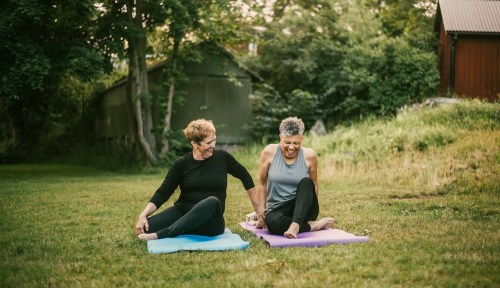How Much Should You Exercise as You Age? A New Study May Hold the Answer
Here's how much exerise you should do as you age, according to studies—plus the benefits of doing so for your health.

We can say a few things for certain, but this is one of them: Movement—whatever kind feels right for your body—is a key to living a longer, healthier life. The research on this topic has been filed time and time again. Most recently, a study published in the journal Proceedings of the National Academy of Sciences found that humans have evolved to stay physically active in the second half of life, and keeping up physical activity has played an active role in helping humans evolve to live longer, healthier lives.
“Humans were selected not just to live several decades after they cease reproducing, but also to be moderately physically active during those post-reproductive years,” the study says. Calling it the “active grandpa hypothesis,” researchers found that, “extended human health spans and lifespans are both a cause and effect of habitual physical activity, helping explain why lack of lifelong physical activity in humans can increase disease risk and reduce longevity.”
So, what does this mean for those of us who are aging—that’d be everyone, BTW—and looking to incorporate movement into their lives? Find an exercise that you enjoy and stay with it. The CDC recommends seniors move at a moderate pace for 150 minutes each week, or 30 minutes a day. Think walking, biking, running, or even swimming laps at the pool to tick this box—really whatever feels right to you and brings you joy. Add in strength training two or more days a week to ensure you retain muscle mass. Regularly stretching and practicing yoga can also work to combat stiffness that makes movement feel harder as you age.
Talk to your doctor and ensure your activity type and intensity are appropriate for your health and fitness needs. And if regular physical activity is not a part of your daily routine, there is no time like the present to start a good regimen.
Here’s some inspo to help get you started:
Sign Up for Our Daily Newsletter
Get all the latest in wellness, trends, food, fitness, beauty, and more delivered right to your inbox.
Got it, you've been added to our email list.










